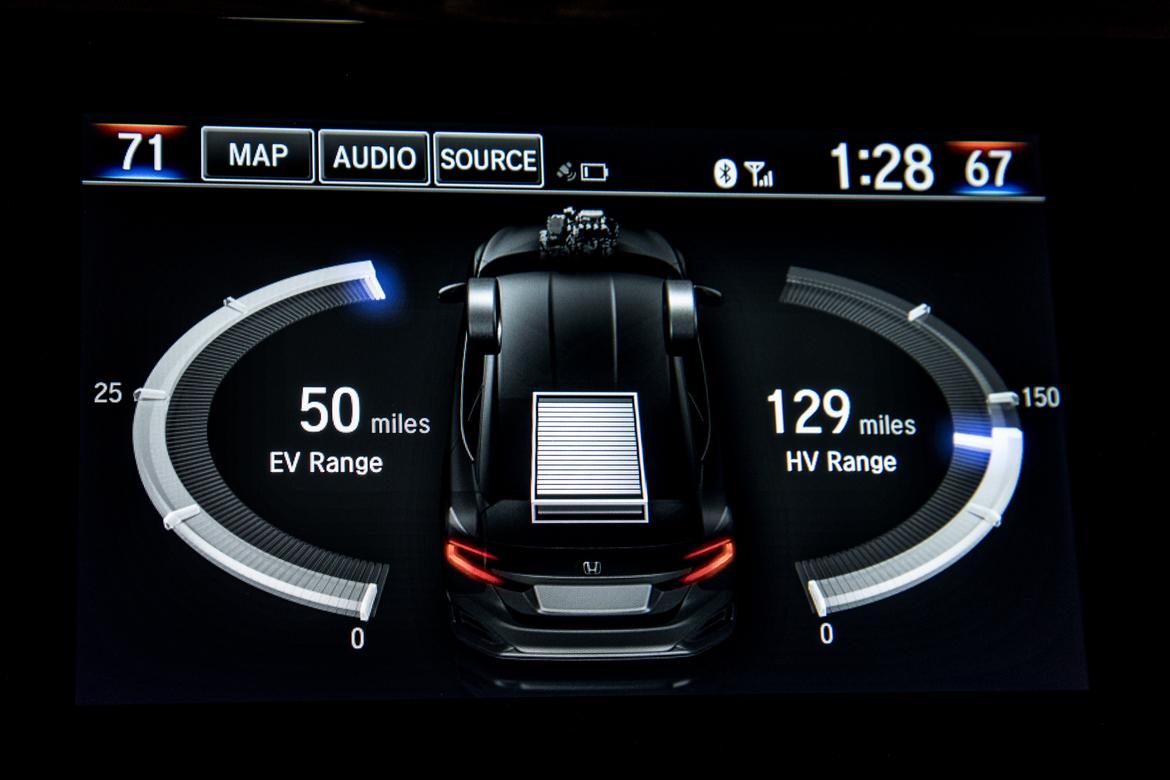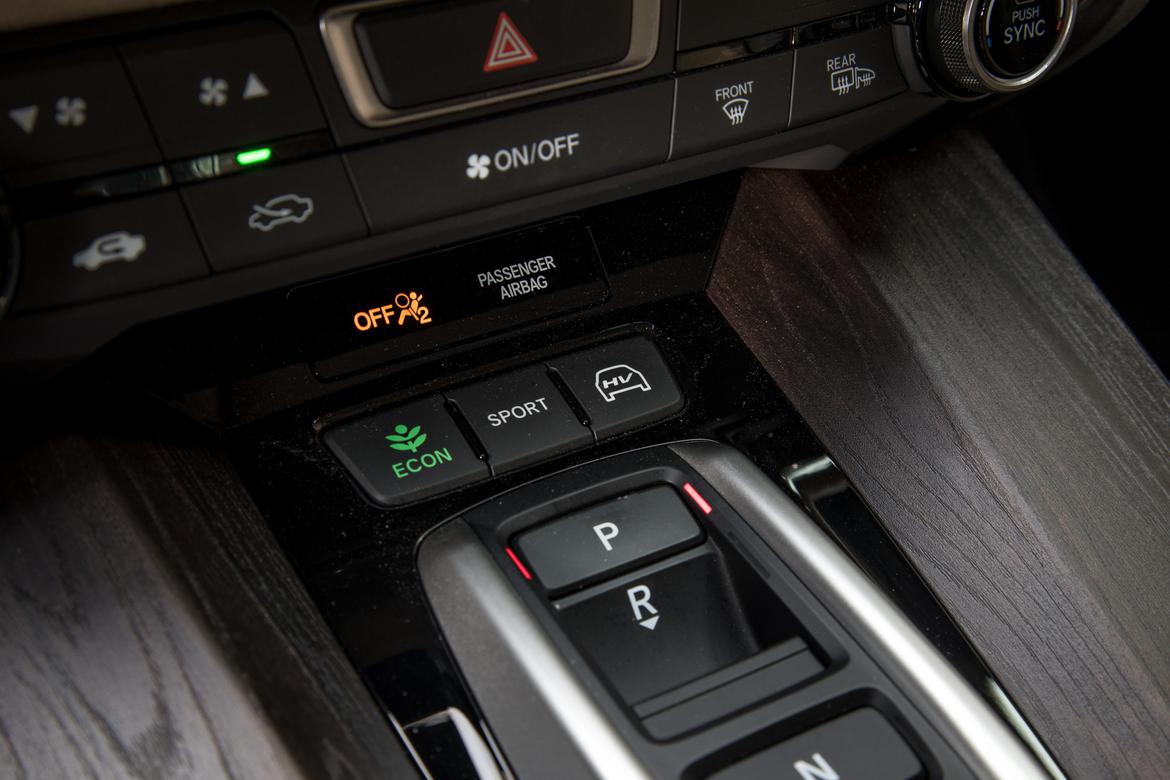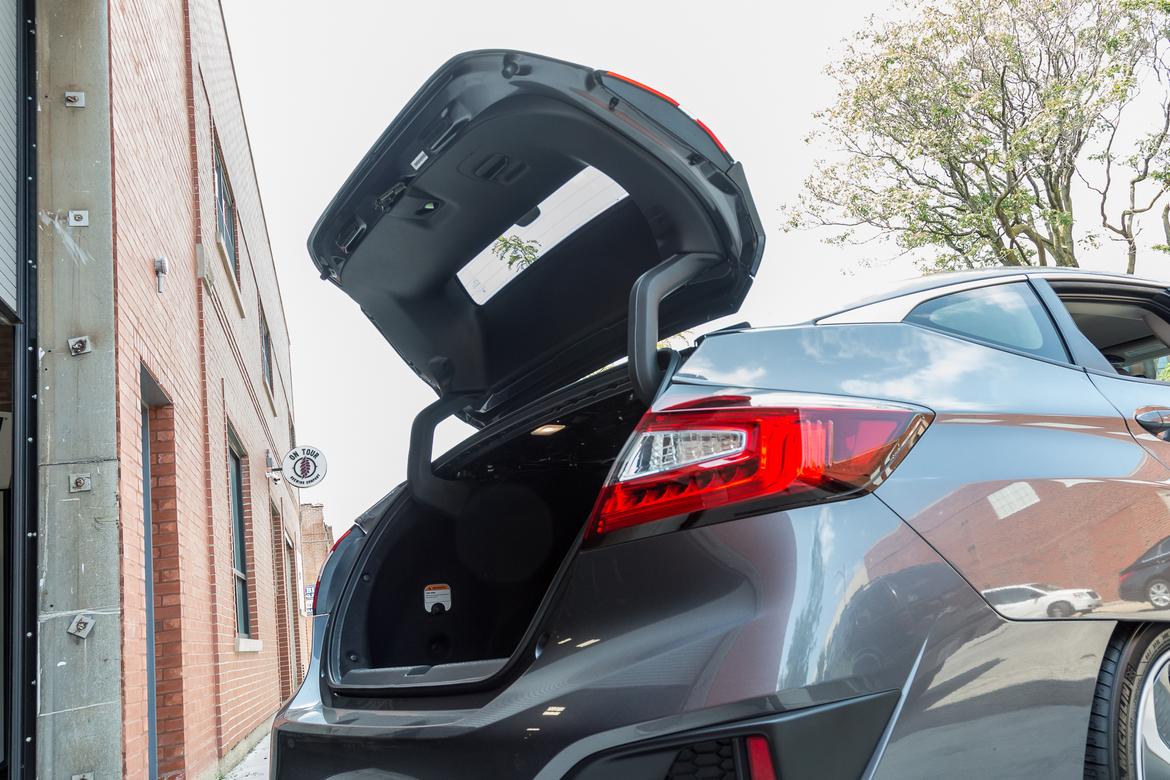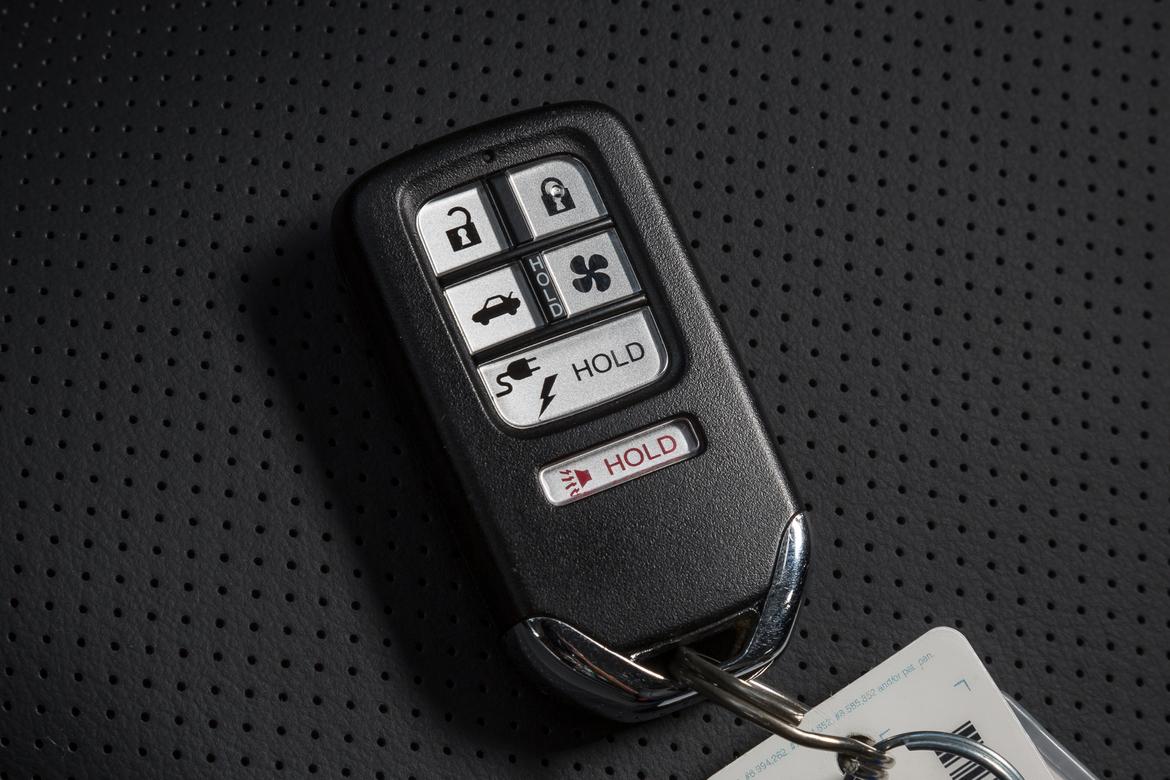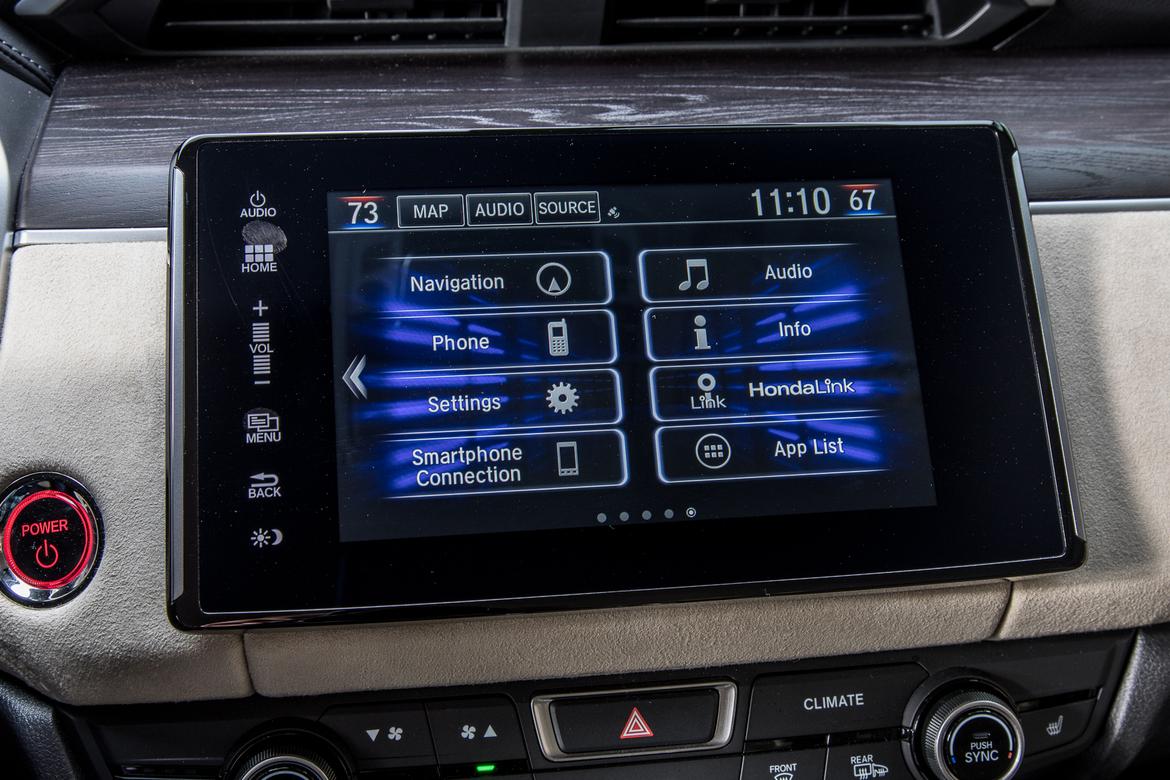The verdict: The Clarity is a rare plug-in hybrid that delivers a good balance of the basics: good electric-only range, decent gas mileage after the charge is depleted and no onerous trade-offs.
Versus the competition: With a price, electric vehicle range and mpg comparable to the Chevrolet Volt — and a roomier interior — the Clarity Plug-In Hybrid is set to capitalize on the admittedly soft demand for plug-in hybrids once the discontinued Volt's supply is exhausted.
This review covers the PHEV version of the Honda Clarity, which also comes with hydrogen fuel-cell and battery-only power in limited markets. It's available in base and Touring trim levels; I tested the latter.
There are 23 plug-in hybrid models on the market today and many more to come. To be frank, most of them aren't very appealing. (I'm not talking about aesthetic appeal, which could be a problem for the unique-looking Clarity, but I'll let you draw your own conclusions there.) They're a great idea — drive a set distance on cheap, potentially clean electric power, then have gasoline power at the ready to allow for longer trips. To my way of thinking, if you're going to the trouble of producing a car that can be plugged in and charged — or you're a consumer willing to invest in such a vehicle and a parking arrangement to support it — you want generous electric-only range and few trade-offs. Unfortunately, though it's roughly the ninth anniversary of modern plug-in hybrids, few yet have met this description. The Clarity Plug-In Hybrid does.
2019 Honda Clarity PHEV Review; Cars.com photos by Christian Lantry
With an EPA-estimated electric range of 47 miles and combined gas mileage of 42 mpg once the charge is depleted, the Clarity rivals the Volt, which has a 53-mile range and the same mpg rating.
The full estimates are 44/40/42 mpg city/highway/combined for the Clarity and 43/42/42 mpg for the Volt.
Sadly, even PHEVs that deliver the goods haven't caught on in the land of consistently low gas prices (that would be 'Merica). Only a year after the Clarity PHEV rolled out in earnest, Chevrolet announced the Volt's pending discontinuation.
Cars.com photo by Christian Lantry
How It Drives
In case you've experienced a hybrid with an "EV" button, which is normally as useful as an elevator's door-close button, this is a very different approach. The Clarity is designed to accelerate under electric power alone up to highway speeds, though the 103-horsepower, 1.5-liter gas four-cylinder engine will activate if you press the pedal far enough. This is similar to the Toyota Prius Prime and Hyundai Ioniq Plug-In Hybrid. A charged Volt, on the other hand, delivers its maximum acceleration on electric power alone; its gas engine may turn on and assist once the highest speeds are reached, but the effect is that of a battery-electric car (apparently, this wasn't enough to keep it in production). System power is 212 hp for the Clarity powertrain.
2019 Honda Clarity PHEV Review; Cars.com photos by Christian Lantry
For what it's worth, the Clarity engine's trigger threshold is quite high when you select the Econ driving mode. So long as you don't gun the accelerator and can manage to keep the needle out of the gray region on the charge/power gauge, the engine won't start. That's because Econ mode ensures acceleration is electric-only for most of the pedal travel; unless you press past the resistance you feel when the pedal's close to the floor and click a switch, the engine won't trigger. I ended up driving a few days without the engine activating, even without fixating on the gauge and absent any effort to accelerate gently. But bear in mind that we have essentially no hills where Cars.com is headquartered, and I never had the car full of people or cargo, which would increase the power demand.
In addition to a Sport mode, which runs the engine much of the time, there's a hybrid vehicle button that maintains the battery's state of charge from the time it's activated. Holding the HV button for a few seconds will command the system to recharge the battery pack fully using the gas engine. It's not an efficient use of energy, just a way of ensuring EV driving later if you're going to want maximum low-speed efficiency down the road — or to sneak home quietly after curfew, I guess (though a pedestrian-alert sound that activates at low speeds, which sounds like subtle computer startup music, might foil you there).
Cars.com photo by Christian Lantry
One plus to driving electric-only is that acceleration feels linear and consistent, which is not the case in most gas-electric hybrids when the two types of motors are working together (including the Clarity once the battery charge is depleted or if you select Sport or HV mode). To be fair, with the exception of the Volt, I've never experienced a gas-electric hybrid with notably high mileage that didn't feel at least a little wonky when accelerating.
For the record, Honda's early hybrids did feel more natural and linear, but they weren't efficient enough to compete with Toyota and Ford. Their so-called Integrated Motor Assist employed a single electric motor that was essentially fixed to the engine's crankshaft, assisting acceleration and providing regenerative braking, but it didn't allow the gas engine to stop turning when the car was in motion. Honda now uses a two-motor system in the Clarity PHEV, Accord Hybrid and new 2019 Insight that's closer in principle to that of Toyota and Ford hybrids. It has two electric motor-generators, one of which serves primarily as a generator, working with a gas engine that runs on the efficient Atkinson cycle, and it's all tied together with a transmission designed to manage the motors' various roles and blend their output (or generation, in the case of one or both electric motors). Apparently, if you want two-motor efficiency, some amount of acceleration awkwardness will come along for the ride.
Unfortunately, there's some braking awkwardness in the Clarity, too, but numb, vaguely disconnected brake-pedal feel is common among hybrids and electric vehicles, both of which employ regenerative braking. If anything, the Clarity's pedal feel is above average for regenerative braking, but the way you adjust the regeneration level is baffling. Like a growing number of plug-ins, the Clarity allows you to select how aggressively the car slows when you lift off the accelerator, and like the Volt and others, it makes use of the type of steering-wheel paddles more commonly tasked with shifting automatic transmissions. Unlike Chevrolet, however, which treats it like a momentary hand brake (weird), the Clarity's paddles work more like the Ioniq PHEV's: One paddle decreases and the other increases braking strength, and each click raises or lowers it across four settings. The problem is that the Clarity then defaults to the original setting after a few seconds. What?! Who wants that? The only driving mode in which the selected setting stays is Sport, which isn't the mode of choice for efficiency.
Overall the Clarity rides very nicely, and we like the steering, as well. I wouldn't call it sporty given it's considerably heavier than, say, a Honda Accord — and because, like most vehicles designed for efficiency, its tires aren't especially grippy.
The Inside
The Clarity's main advantage over the Volt — aside from not being discontinued — is that it's roomier. Technically a mid-size car, its interior volume is 101 cubic feet, versus 90.3 cubic feet for the compact Volt. It beats the Volt's 35.8 inches of backseat headroom with 37.1 inches and leads the class with 36.2 inches of rear legroom versus the Volt's 34.7 inches, the Ioniq Plug-In's 35.7 inches and the Prius Prime's 33.4 inches. The backseat is also wider than its competitors'. I found my knees raised a bit, which compromises thigh support and long-term comfort, but this is a common trend in cars of all types, to improve headroom. See these competitors compared side by side.
2019 Honda Clarity PHEV Review; Cars.com photos by Christian Lantry
Overall, the cabin proved quite comfortable, though some drivers objected to the hard center console encroaching on leg space. While noise levels are reasonable, we recall the Volt being a quieter vehicle even when comparing hybrid-mode driving. Fortunately, the Clarity's gas engine isn't as intrusive-sounding as we've found the 2019 Insight's to be.
Outward visibility is pretty good for a green car. Even though the windshield has a shallow rake and the windshield pillars extend far forward, they aren't too thick and obstructive. The tail has the weird split rear-window design that's common among wedge-shaped aerodynamic cars. Because it's a trunk rather than a hatchback, you actually look through a short, wide window behind the backseat, through the trunk, then through another short window in the trunk lid. Split rear windows aren't a best-case scenario, but if the weird lower window weren't there (or you filled the trunk to the brim), you'd recognize the lower pane's value.
Cars.com photo by Christian Lantry
Cargo Space
For a sedan with a battery pack, the Clarity PHEV's cargo accommodation is quite good. As we always emphasize, you can't compare manufacturers' trunk measurements to hatchback measurements, so it's not as simple as the Clarity's 15.5-cubic-foot trunk being definitively larger than the Volt's 10.6-cubic-foot hatch. But the Accord's 16.7-foot trunk (regular or hybrid) shows the Clarity is in the right ballpark.
Even though the Clarity has a folding backseat that leaves a larger opening than do many sedans that also accommodate a battery pack, the Volt's hatchback body style is an advantage for larger items despite it being a smaller vehicle overall. It would be difficult to name a victor in the Volt-versus-Clarity cargo contest.
2019 Honda Clarity PHEV Review; Cars.com photos by Christian Lantry
The Preconditioning Prerequisite
Outside temperatures in the 80s and 90s combined with my mellow driving style to give estimated electric ranges as high as 58.5 miles, according to the instrument panel, proving that conditions can yield ranges both higher and lower than the EPA-estimated 47 miles.
Experience has proved how dramatically outside temperatures can affect electric-vehicle range, and cold is far worse than heat. Though running the air conditioning does bite into range, the double-whammy of power-robbing electric heat combines with the decreased capacity of cold batteries to steal double digits from your range estimate once outside temperatures drop around freezing or below. (A study by AAA specifies a loss of more than 40 percent at 20 degrees Fahrenheit.) This is why it's critical to precool or preheat a plug-in vehicle while it's still plugged in. Yes, the A/C or heat required while you drive will cost you some range, but using grid power before you depart means you won't immediately blitz a full battery for cabin comfort.
Cars.com photo by Christian Lantry
To facilitate this, Honda lets you activate the car's ventilation system via the key fob and a smartphone app. Unlike some brands, the onboard HondaLink system that allows your phone to communicate with the car is included at no charge for the life of the vehicle.
Charging and Costs
How much you need to invest to charge the Clarity depends on how you intend to use it. The provided 120-volt charging cord does the job, but in my testing, it added only about 4.5 miles of range for every hour of charging. It can take up to 12 hours to refill a depleted battery, according to Honda. The box drew about 11 amps of current, leaving plenty of juice in my garage's 20-amp circuit for the garage door, lights, etc.
But if you want to drive the car more often or limit charging to off-peak rates, the Clarity PHEV can add as much as 20 miles of range per hour if charged with 240 volts at 30 amps, either publicly or at home (from empty to full in 2.5 hours, Honda estimates). The latter requires standardized Level 2 charging hardware, which costs about $500, plus installation (cost depends on your home configuration).
2019 Honda Clarity PHEV Review; Cars.com photos by Christian Lantry
Another compelling reason for 240-volt charging is the cabin preconditioning described above. It represents five times the power to precool or -heat the Clarity before you depart. The supplied 120-volt cord, on the other hand, failed to cool down our test car when it was sitting outside in the sun. When it comes to inconvenience, most EV owners find that plugging in their vehicle nightly is far, far preferable to visiting a gas station — something you do way less with a PHEV.
As I write this, the national average price per gallon of regular gasoline is $2.84, which puts the Clarity PHEV's operating cost per mile at 6.7 cents based on the rated 42 mpg. It cost me about 3.5 cents per all-electric mile based on my measurement of the electricity used to charge the battery pack, 2018's national average cost of 12.9 cents per residential kilowatt-hour, and the 48.5 miles of range added. This is where you see the advantage of a plug-in car versus an efficient gas equivalent if you charge and drive it as intended. The most efficient non-hybrid Accord is rated 33 mpg combined, which works out to 8.6 cents per mile. Even the Accord Hybrid's 48 mpg combined equals 5.9 cents per mile — only slightly better than the Clarity PHEV if you never plug it in.
What Do You Give Up?
There are always trade-offs in plug-in hybrids, primarily because having two powertrains and a sizeable battery pack eats up space. The Clarity's are few. As detailed above, cabin and cargo space are competitive. What loses out is the gas tank, which is smaller than a normal car's. If you use the car as intended, always charging it and running electric whenever you can, it's no problem. But if you go on longer trips between charging, you'll find the total range is an EPA-estimated 340 miles including the 47 electric miles — meaning 293 miles between fill-ups on a road trip. For comparison, the Volt's total is 420 miles (53 electric), the Prius Prime's is 640 miles (25 electric) and the Ioniq Plug-In is 630 miles (29 electric).
A normal, non-hybrid Honda Accord's range is estimated at 385 to 488 miles, depending on engine and transmission, so the Clarity doesn't sacrifice much if you start out with a full battery.
Shortcomings
The Clarity doesn't have a mechanical volume knob or buttons, much less a tuning knob. Its earlier generation of the Display Audio touchscreen multimedia system has a panel of touch-sensitive buttons on its left flank. Even if you're not wearing gloves, this is a design consumers just don't like. Honda clearly knows that, as it's added one or two knobs in some redone models from the same period and since, but it must have been too late for the Clarity.
Cars.com photo by Christian Lantry
Beyond the mechanical interfacing, the touchscreen's menus and graphics didn't win any fans among our editors. Apart from one appealing range display, the art looks outdated, and you can't see some information that does appear on the smartphone app.
This is one area where Tesla's ability (and commitment) to update its vehicles would be priceless for Honda to adopt. The same is true of my other main complaints about the regenerative braking adjustment scheme and other aspects of the car. My quibbles are just a code change away from being improved — but that won't happen because, like almost all other automakers, Honda doesn't operate this way.
Should You Buy a Clarity PHEV?
There are different vehicle types for different uses. If you're someone who will use the Clarity PHEV as intended, it can provide you with cheaper motoring than the most efficient regular hybrid — currently the Hyundai Ioniq Blue (58 mpg combined, 4.9 cents per mile). It's only when you travel beyond the Clarity's electric range that its advantage begins to diminish. In a Clarity, you'll also go only half of the Blue's whopping 690 estimated miles between fill-ups.
The price is definitely right. Compare the Clarity Plug-In side by side with the Accord in gas-only and regular hybrid forms and you'll see similar prices. As of this writing, the Accord Hybrid lists for $26,240 (all prices include destination charges). The Clarity Plug-In is $34,320 but is eligible for a federal tax credit of up to $7,500 (the amount depends on your taxable income and requires you to pay up front, collecting the credit only at tax-return time). This works out to a price as low as $26,820. The regular Accord starts at $24,640, but that's for the base trim level; the Clarity is better equipped, with features like HomeLink, heated seats, HondaLink and more.
Plug-in hybrids haven't taken off, and one reason might be that many early PHEVs were so short on range and long on trade-offs that they poisoned the well. Or maybe consumers just don't get it, which seems to be the case with pure EVs, as well. One of the biggest problems is that consumers don't recognize how little range they truly need on a daily basis when charging overnight at home rather than fueling publicly. As a result, EV models with ranges of less than 200 miles — the more affordable options — get overlooked. Unless you're trying to get by with an EV as your only car, the high premium you pay for long electric ranges may be a waste. For someone who wants to get his or her feet wet without risk, a well-executed plug-in hybrid like the Clarity Plug-In does the job with practically no trade-offs.
Source: Read Full Article

